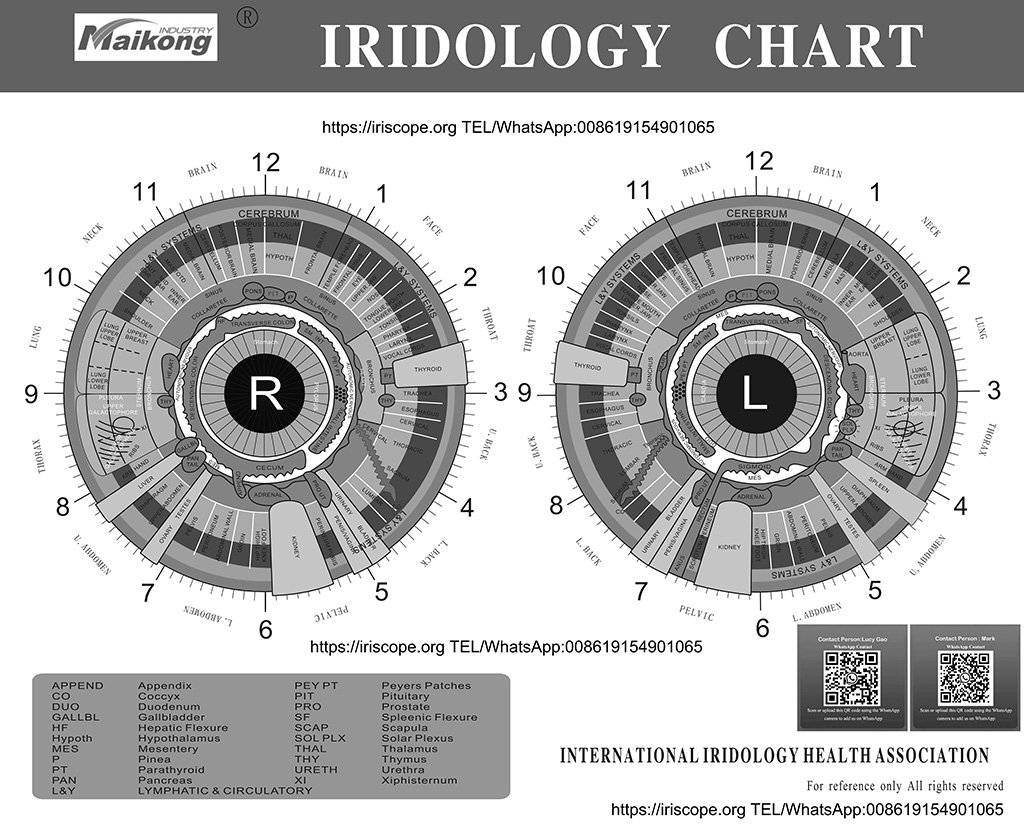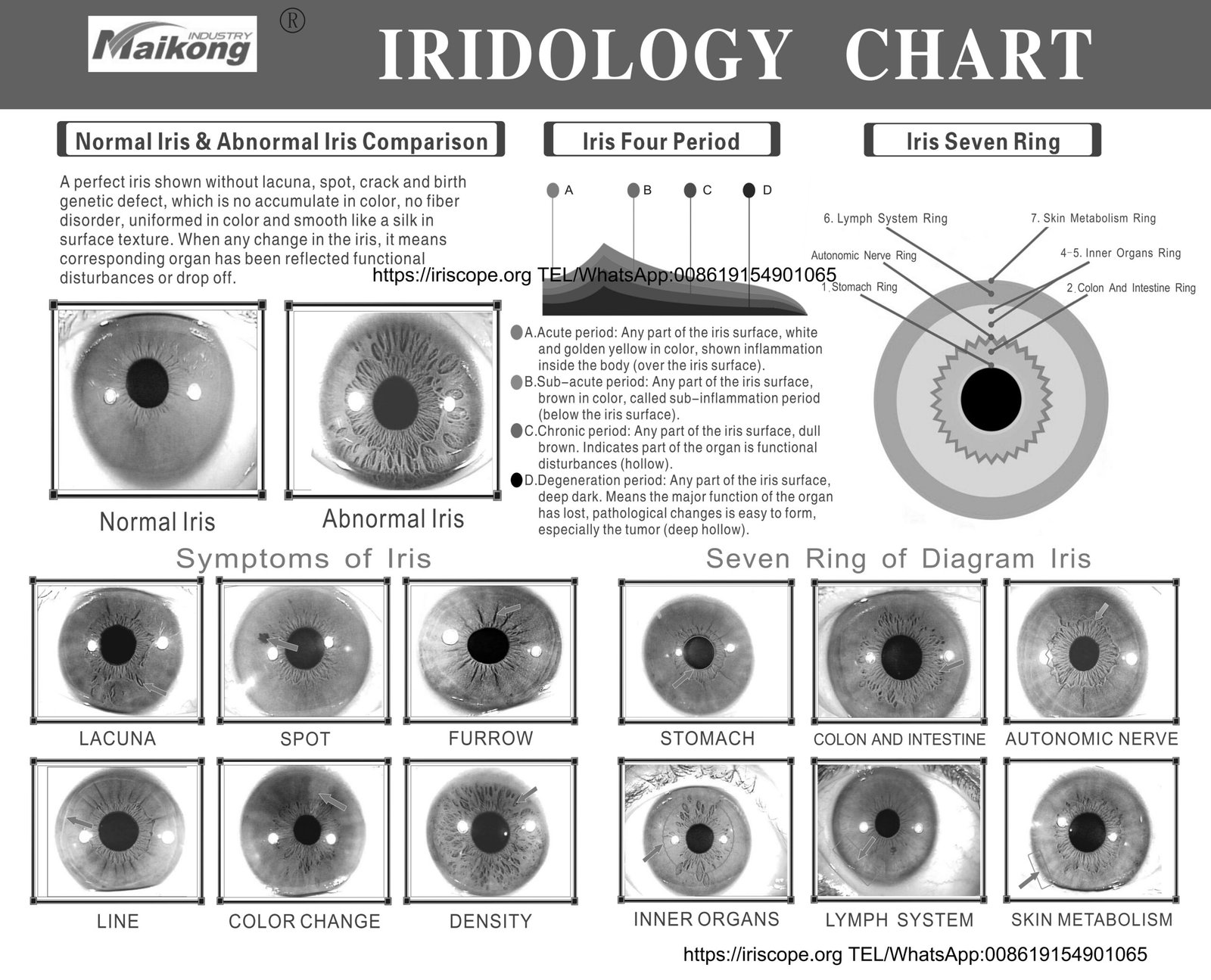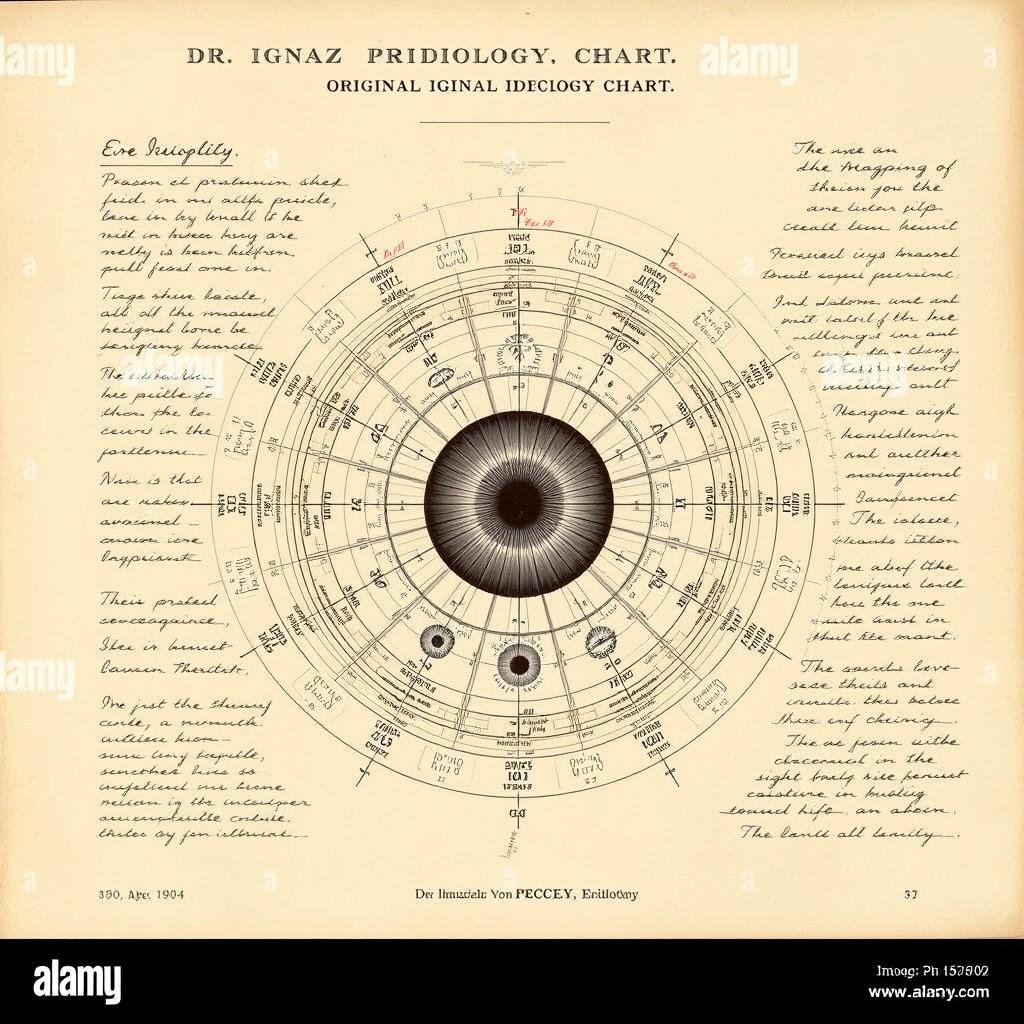جي قديم مشق Iridology Iris Diagnosis offers a unique window into your body’s health through careful examination of the iris, the اک جو رنگ وارو حصو. This non-invasive diagnostic method has been used for centuries to identify potential health imbalances before they manifest as serious conditions. By mapping specific zones of the iris to corresponding body systems, iridologists can detect signs of inflammation, toxin accumulation, and organ stress that might otherwise remain hidden.
In this comprehensive guide, we’ll explore how Iridology Iris تشخيص works, its historical foundations, and its applications in modern holistic health practices. Whether you’re a health practitioner interested in expanding your diagnostic tools or someone seeking alternative approaches to understanding your body’s needs, this ancient yet relevant practice offers valuable insights into achieving optimal wellness.
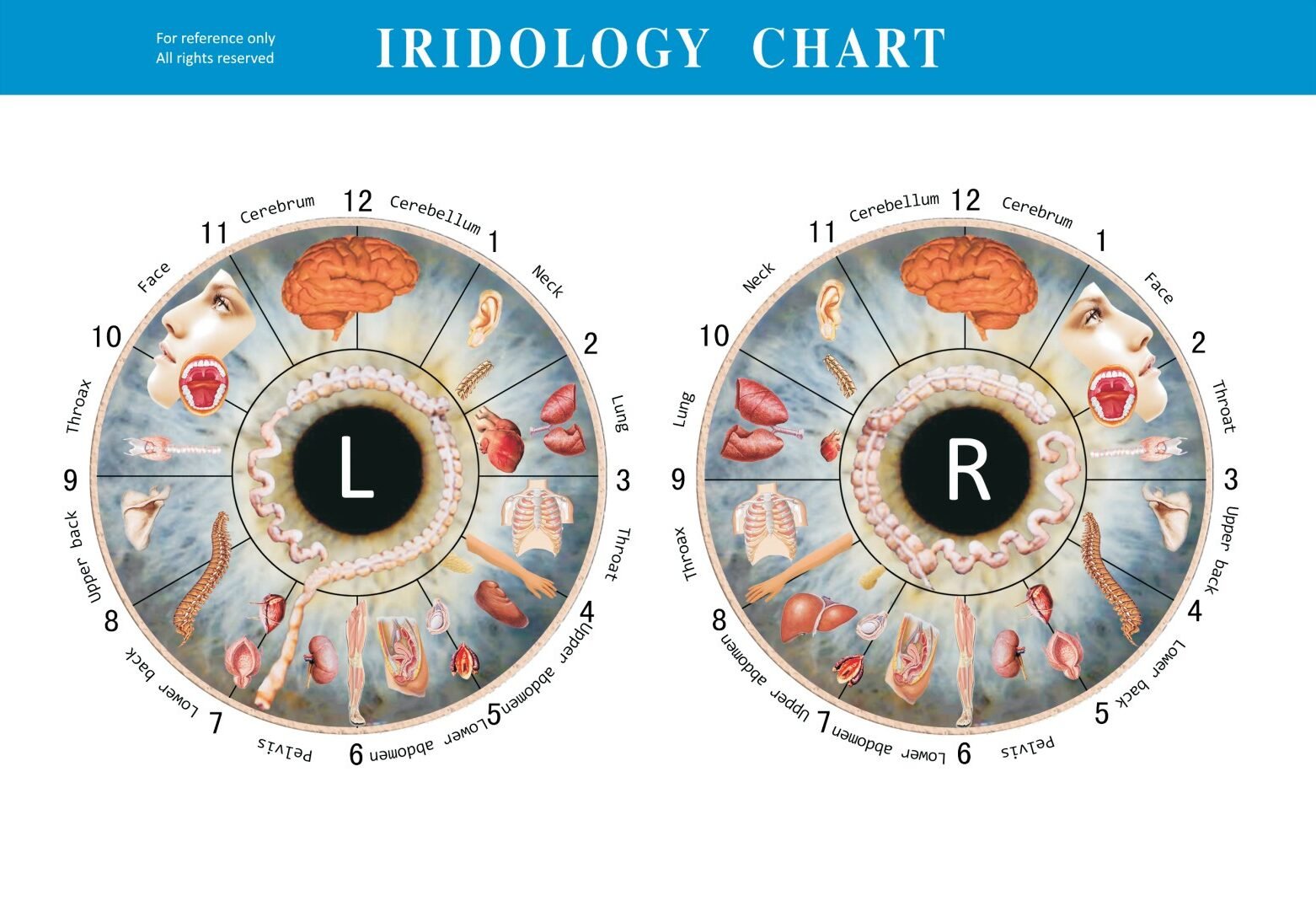

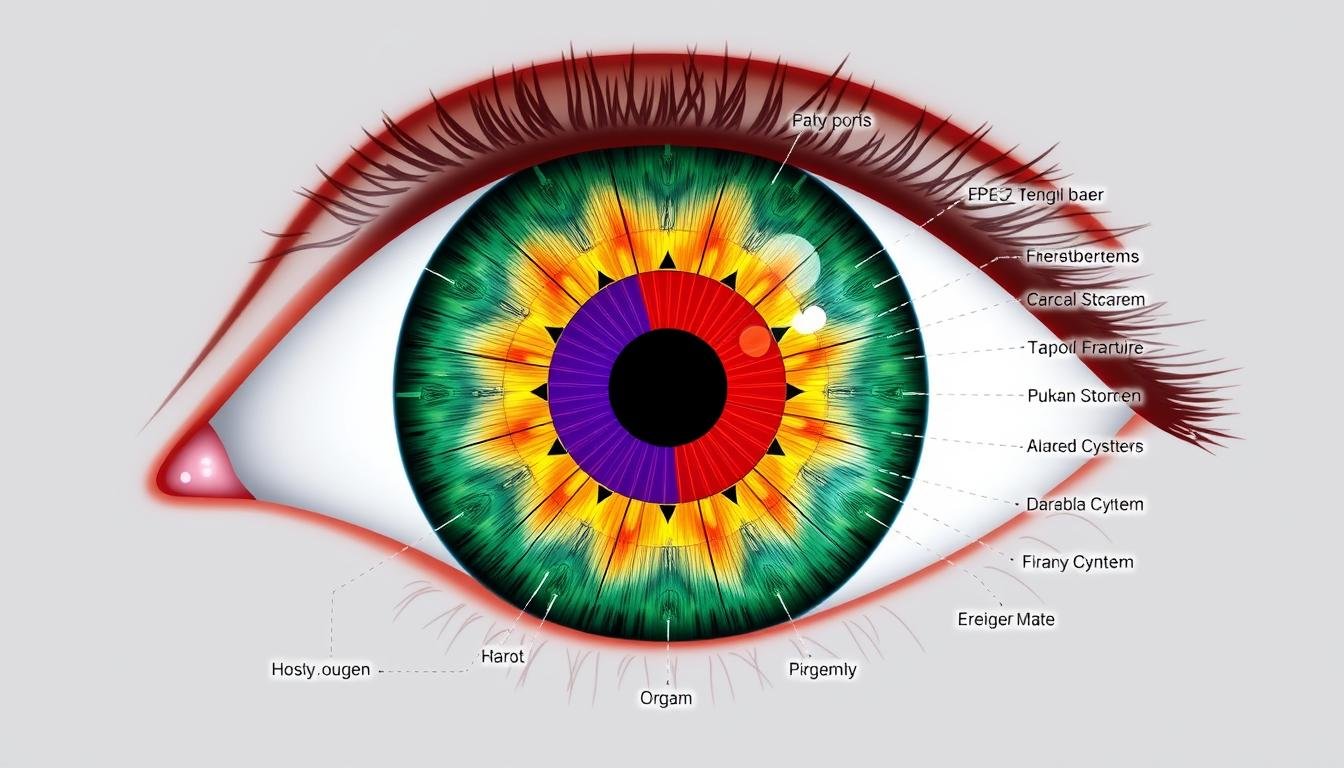
Comprehensive Iridology Iris تشخيص chart showing how different iris zones correspond to body systems
The Historical Foundations of Iridology Iris تشخيص
The practice of examining the iris for health insights dates back thousands of years. Ancient civilizations in Egypt, China, and India recognized patterns in the اک جو رنگ وارو حصو that corresponded to health conditions. However, modern Iridology Iris تشخيص as we know it today began taking shape in the 19th century.
Dr. Ignaz von Peczely: The Father of Modern Iridology Iris تشخيص
The foundations of contemporary iridology are often attributed to Dr. Ignaz von Peczely, a Hungarian physician who made a fascinating observation as a child. After accidentally breaking an owl’s leg, he noticed a distinct dark mark appear in the bird’s iris. Later, as the leg healed, he observed the mark changing in appearance.
This childhood experience inspired von Peczely to study medicine and develop the first comprehensive iris chart in the 1860s. His chart mapped specific areas of the iris to corresponding organs and systems in the human body, creating the framework for modern Iridology Iris تشخيص.
Evolution Through the 20th Century
Another significant contributor to the field was Nils Liljequist, a Swedish homeopath who independently developed similar theories after observing changes in his own iris following medical treatments. His work, combined with von Peczely’s, helped establish Iridology Iris تشخيص as a recognized practice in Europe.
In the early 20th century, Dr. Bernard Jensen brought iridology to prominence in the United States, refining the iris charts and methodology. His extensive research and clinical observations led to more detailed mapping systems that are still used by many practitioners today.
Discover Professional Iridology Equipment
Explore our range of professional iriscopes, iridology cameras, and analysis software used by practitioners worldwide.
View Iridology Equipment
The Science Behind Iridology Iris تشخيص
While traditional medicine approaches Iridology Iris تشخيص with skepticism, practitioners point to several scientific principles that support its methodology. Understanding these principles helps explain how changes in the iris might reflect health conditions throughout the body.
Neurological Connections Between the Iris and Body Systems
The iris contains thousands of nerve endings that connect to the brain via the optic nerve. These neural pathways are part of the same autonomic nervous system that regulates organ function. Iridologists suggest that this neurological connection allows information about organ stress or dysfunction to be reflected in the iris tissue.

Neural pathways connecting the iris to the brain and various body systems
ڪئين Iridology Iris تشخيص Maps Organ Systems
In Iridology Iris تشخيص, the iris is divided into zones that correspond to different parts of the body. The right iris generally reflects the right side of the body, while the left iris corresponds to the left side. The chart typically divides the iris into 60 sectors, similar to a clock face.
For example, the digestive system is often represented near the center of the iris around the pupil, while the skin, joints, and extremities are mapped to the outer edges. Specific organs like the heart, liver, and kidneys have their designated zones within this framework.

Right iris mapping in Iridology Iris تشخيص

Left iris mapping in Iridology Iris تشخيص
Interpreting Iris Signs and Markings
Iridologists analyze various features in the iris, including:
- رنگ جون تبديليون: Changes in pigmentation may indicate inflammation or chemical deposits
- Fibers and structures: The arrangement of fibers can reveal genetic predispositions and constitutional strengths or weaknesses
- Rings and lesions: Circular marks may indicate stress in specific organs or systems
- Pigment spots: Dark spots might represent toxin accumulation or damaged tissue
- ليڪونا: Empty spaces or lesions that may indicate inherent weaknesses
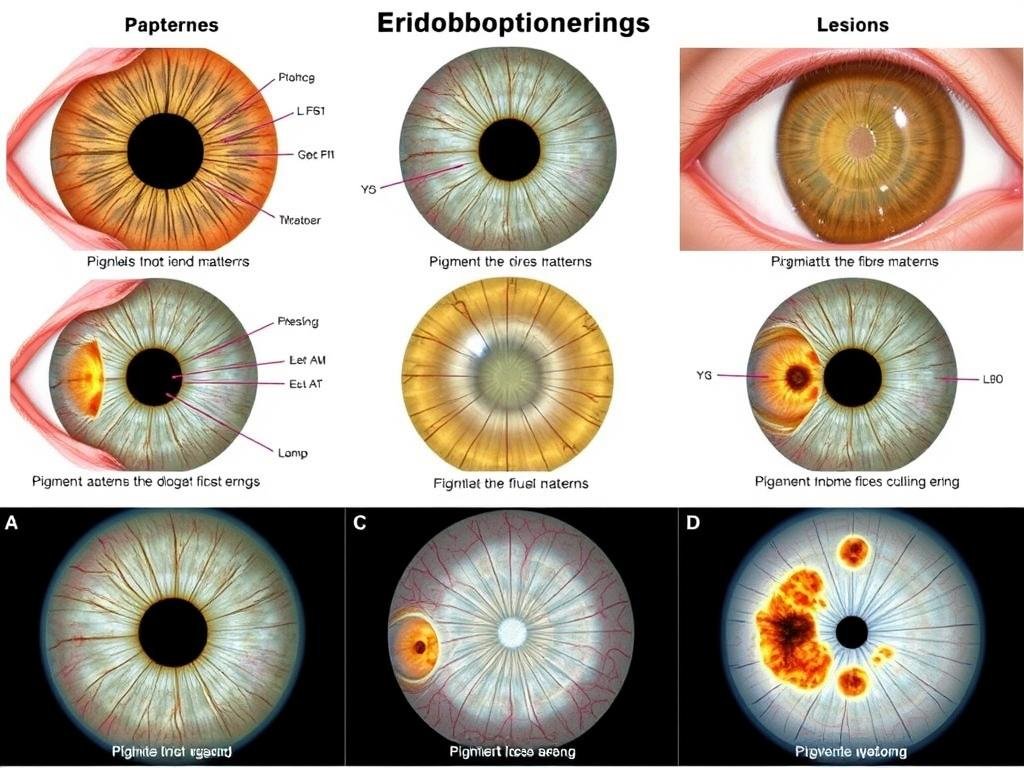
Common iris markings analyzed in Iridology Iris تشخيص
جي Iridology Iris تشخيص Methodology
A professional iridology session follows a structured methodology to ensure accurate and comprehensive analysis. Understanding this process helps clarify what to expect during an Iridology Iris تشخيص consultation.
Equipment Used in Professional Iridology Iris تشخيص
Modern iridologists use specialized equipment to examine the iris in detail:
- ارسڪوپ: A specialized microscope designed specifically for examining the iris
- Iridology ڪئميرا: High-resolution digital cameras that capture detailed images of the iris for analysis
- Iridology software: Programs that enhance and analyze iris images, often overlaying mapping grids for precise reference
- Iris charts: Detailed reference maps showing the correlation between iris zones and body systems
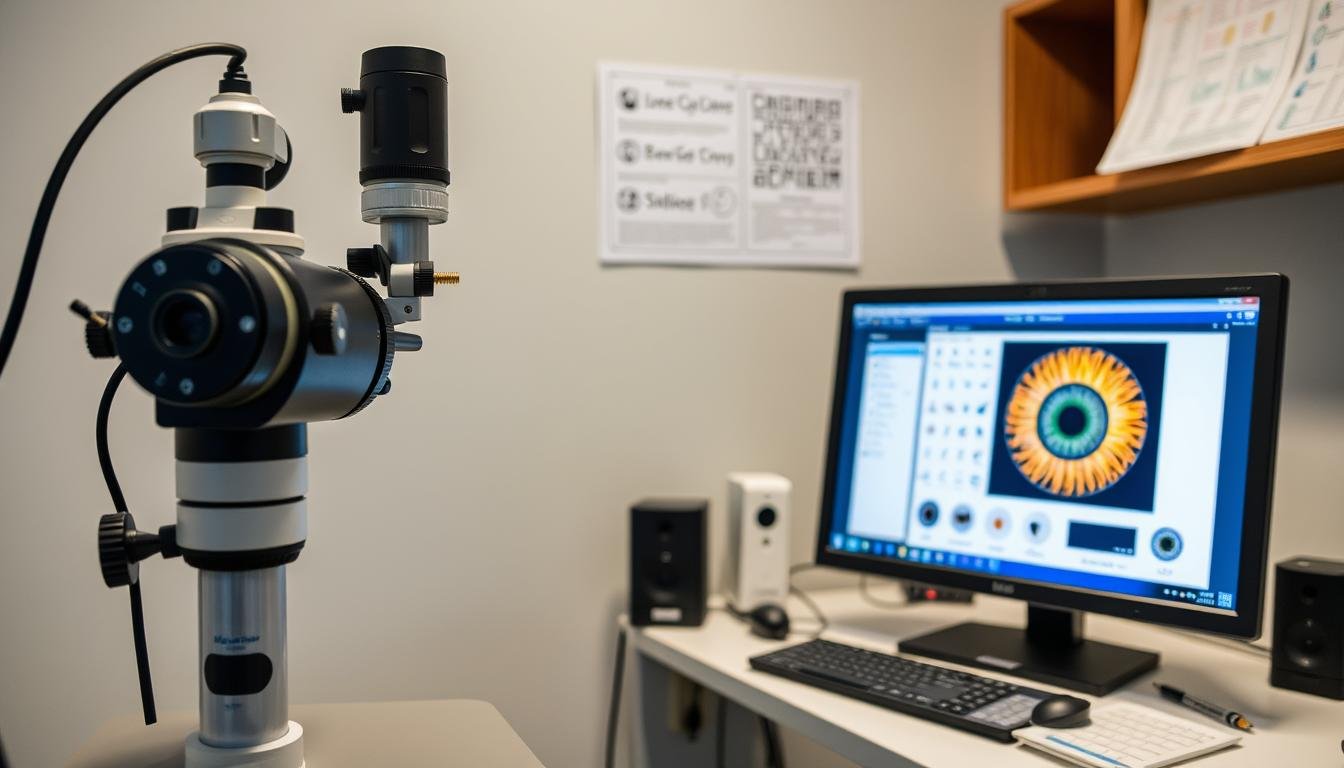
Professional iridology equipment including iriscope and digital analysis software
جي Iridology Iris تشخيص Examination Process
A typical iridology examination follows these steps:
- Initial consultation: The practitioner gathers health history and primary concerns
- Iris photography: High-resolution images are taken of both irises
- Examination: The iridologist studies the iris structures, colors, and markings
- تجز مبارڪ: Findings are correlated with iridology charts and the client’s health history
- Consultation: Results are discussed, focusing on areas of strength and potential imbalance
- Recommendations: Suggestions for addressing identified imbalances are provided
Professional Iridology Consultation
Interested in discovering what your iris reveals about your health? Contact our specialists for a professional consultation.
Call for Consultation
What Iridology Iris تشخيص Can and Cannot Reveal
It’s important to understand the scope and limitations of iridology:
What Iridology Can Reveal:
- آئيني قوتون ۽ ڪمزوريون
- Inflammation and congestion in tissues
- Toxic accumulations
- Nutritional imbalances
- Inherent predispositions
- Stress levels in various organs
What Iridology Cannot Do:
- Diagnose specific diseases
- Replace medical testing
- Identify pregnancy
- Detect surgical removals
- Determine blood type
- Predict life expectancy
Health Conditions That Iridology Iris تشخيص May Help Identify
While iridology doesn’t diagnose specific diseases, practitioners report that certain iris signs may indicate tendencies toward particular health imbalances. These observations can serve as early warning signs, prompting preventive measures before conditions become serious.
Digestive System Imbalances
The digestive system is often represented near the pupil in iridology charts. Signs that may indicate digestive imbalances include:
- Dark rings around the pupil (stomach and intestinal stress)
- White lesions in digestive zones (potential inflammation)
- Radial lines in specific segments (possible malabsorption issues)
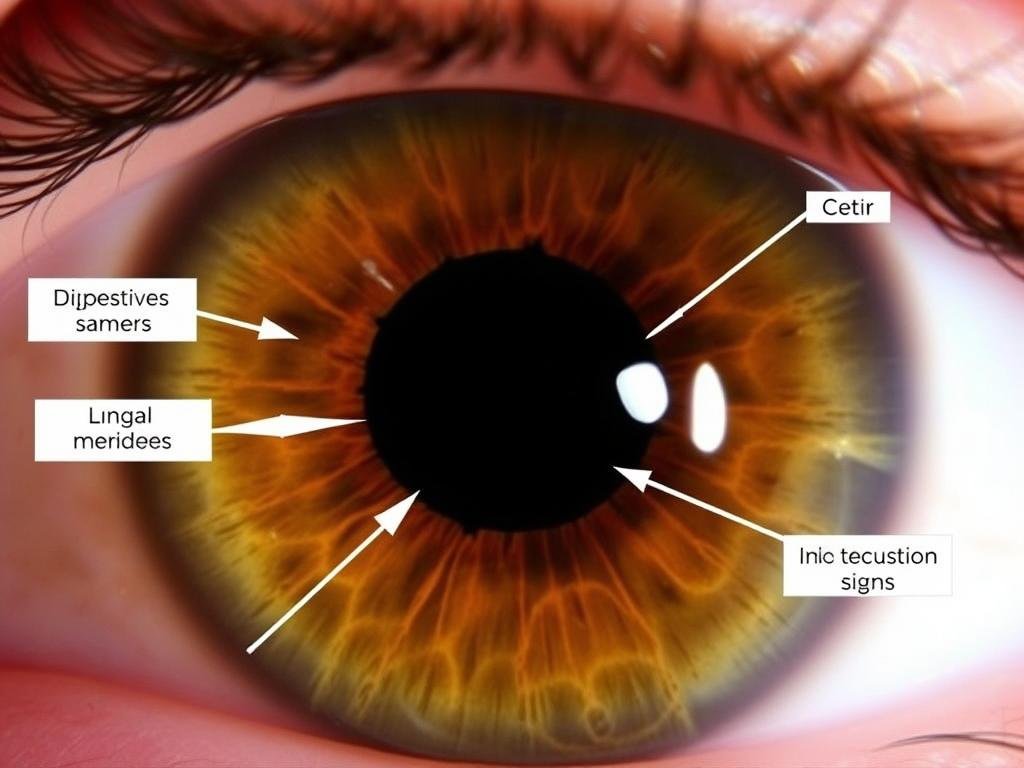
Iris signs indicating digestive system imbalances
Lymphatic System Congestion
The lymphatic system plays a crucial role in immunity and detoxification. In iridology, lymphatic congestion may appear as:
- White cloudy areas in the outer iris zones
- Lymphatic rosary (a chain of white dots in a circular pattern)
- Tophi (small white accumulations) in specific areas
Stress and Nervous System Indicators
The nervous system’s condition may be reflected in the iris through:
- Nerve rings (concentric circles in the iris)
- Radial furrows (spoke-like lines extending from the pupil)
- Color changes in areas corresponding to the brain and spinal cord
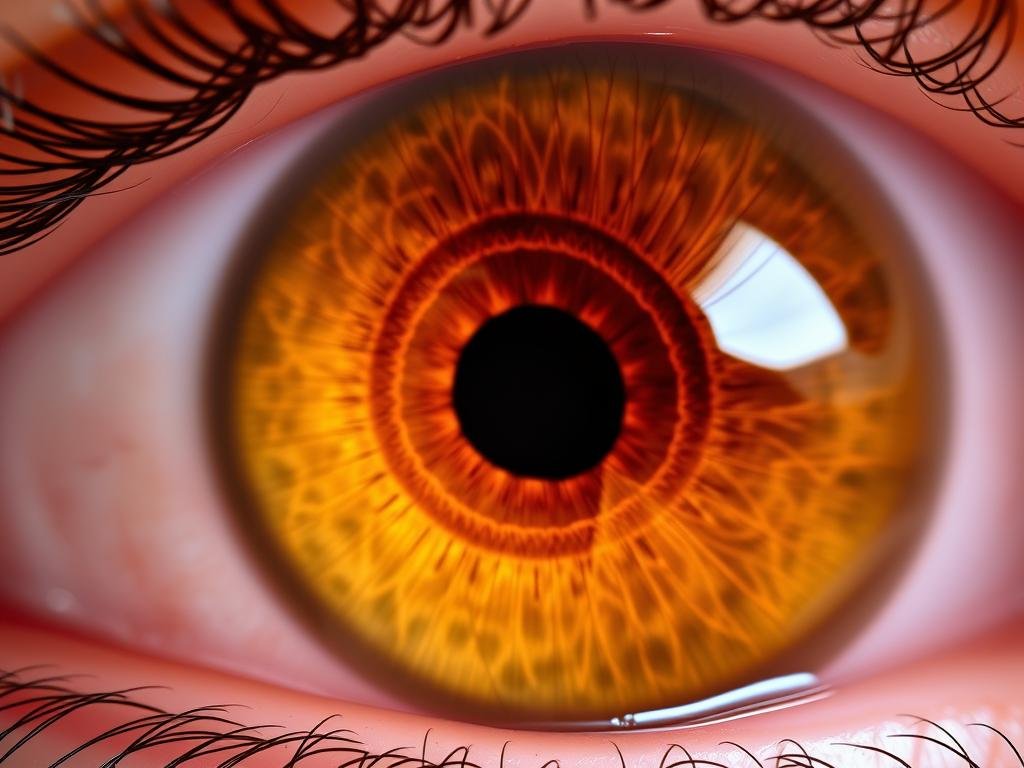
Nerve rings in iris indicating chronic stress patterns
Cardiovascular System Observations
Cardiovascular health may be reflected in specific iris zones through:
- Discoloration in heart and circulation zones
- Arcus senilis (white ring around the outer iris)
- Specific fiber arrangements in vascular areas
Learn About Our Iridology Software
Our advanced iridology software helps practitioners identify and track these iris signs with precision and ease.
Explore Iridology Software
Research and Evidence in Iridology Iris تشخيص
The scientific community has varying perspectives on iridology. While some studies question its diagnostic validity, others suggest potential applications in certain health assessments. Understanding the current research landscape helps form a balanced view of this practice.
Scientific Studies on Iridology Iris تشخيص
Research on iridology has produced mixed results:
What do skeptical studies show?
Some studies, including a systematic review published in the journal “Forsch Komplementärmed” (1999), concluded that iridology’s efficacy as a diagnostic tool was not supported by scientific evaluations. Critics often point to the lack of standardized methodology and reproducible results.
What do supportive studies suggest?
Other research, particularly from countries where iridology is more widely practiced, suggests potential correlations between iris signs and certain health conditions. For example, some studies in Russia and Korea have reported correlations between specific iris features and particular health parameters.
Is Iridology Iris تشخيص Scientifically Validated?
The scientific status of iridology remains contested. While it hasn’t gained widespread acceptance in conventional medicine, many holistic practitioners find value in its application as part of a comprehensive health assessment approach.
It’s important to note that iridology is typically used as a complementary tool rather than a standalone diagnostic method. Most responsible practitioners recommend conventional medical testing to confirm any serious health concerns identified through iris analysis.
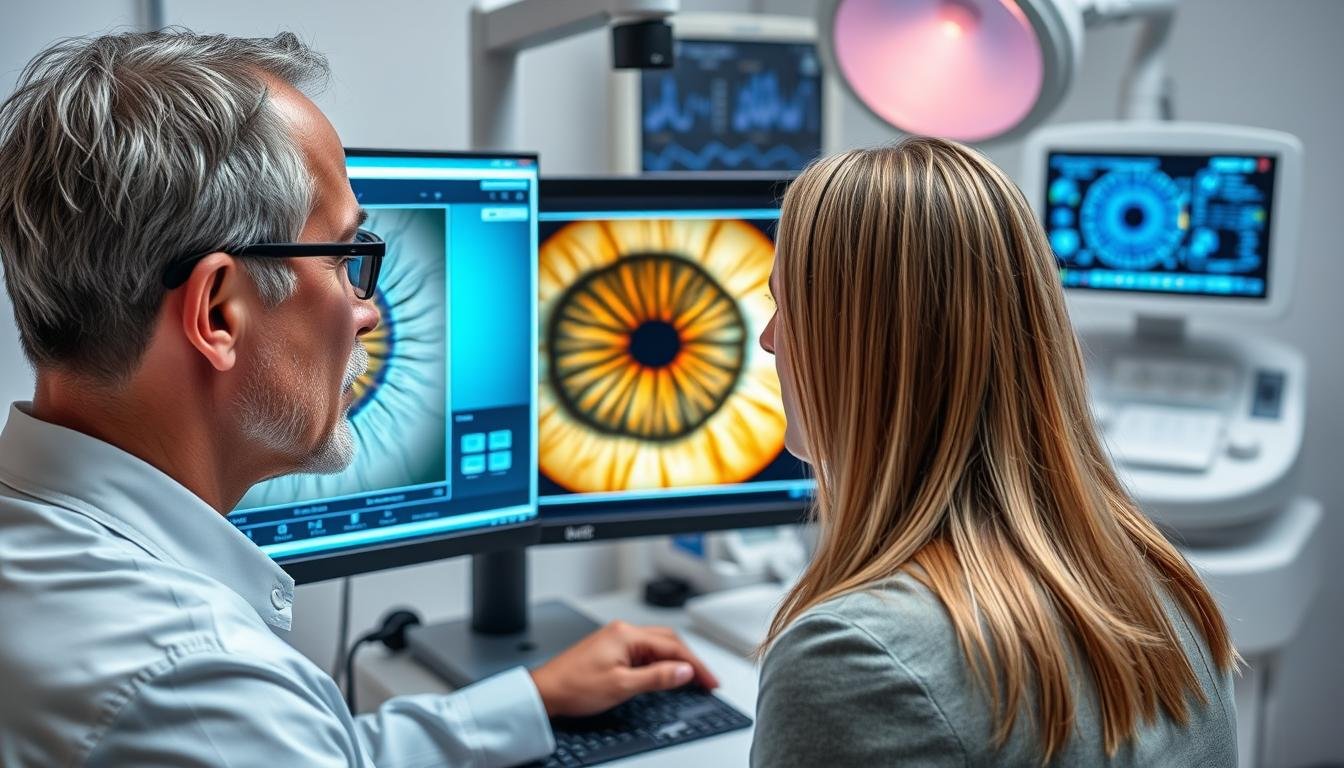
Modern iridology combines traditional knowledge with digital analysis tools
Integrating Iridology Iris تشخيص with Conventional Medicine
Many practitioners take an integrative approach, using iridology alongside conventional medical assessments:
- Using iridology to identify potential areas of concern for further medical investigation
- Employing iris analysis as part of a holistic health assessment
- Monitoring changes in the iris over time to assess response to treatments
- Combining iridology insights with laboratory testing for a more complete picture
Conclusion: The Value of Iridology Iris تشخيص in Holistic Health
Iridology Iris تشخيص offers a unique perspective on health assessment that aligns with holistic principles of prevention and whole-body wellness. While not a replacement for conventional medical diagnosis, it provides valuable insights into constitutional tendencies, potential imbalances, and areas that may benefit from supportive care.
As with any health approach, iridology is most effective when used as part of an integrated strategy that includes proper nutrition, stress management, physical activity, and appropriate medical care. The iris may indeed be a window not only to the soul but also to aspects of our physical wellbeing that deserve attention and care.
Whether you’re a health practitioner interested in adding this tool to your practice or an individual curious about what your eyes might reveal about your health, Iridology Iris تشخيص offers a fascinating lens through which to view the complex interplay of factors that contribute to overall wellness.
Contact Us for Iridology Consultation or Equipment
Interested in learning more about iridology or our professional equipment? We provide global distribution and expert support.
















